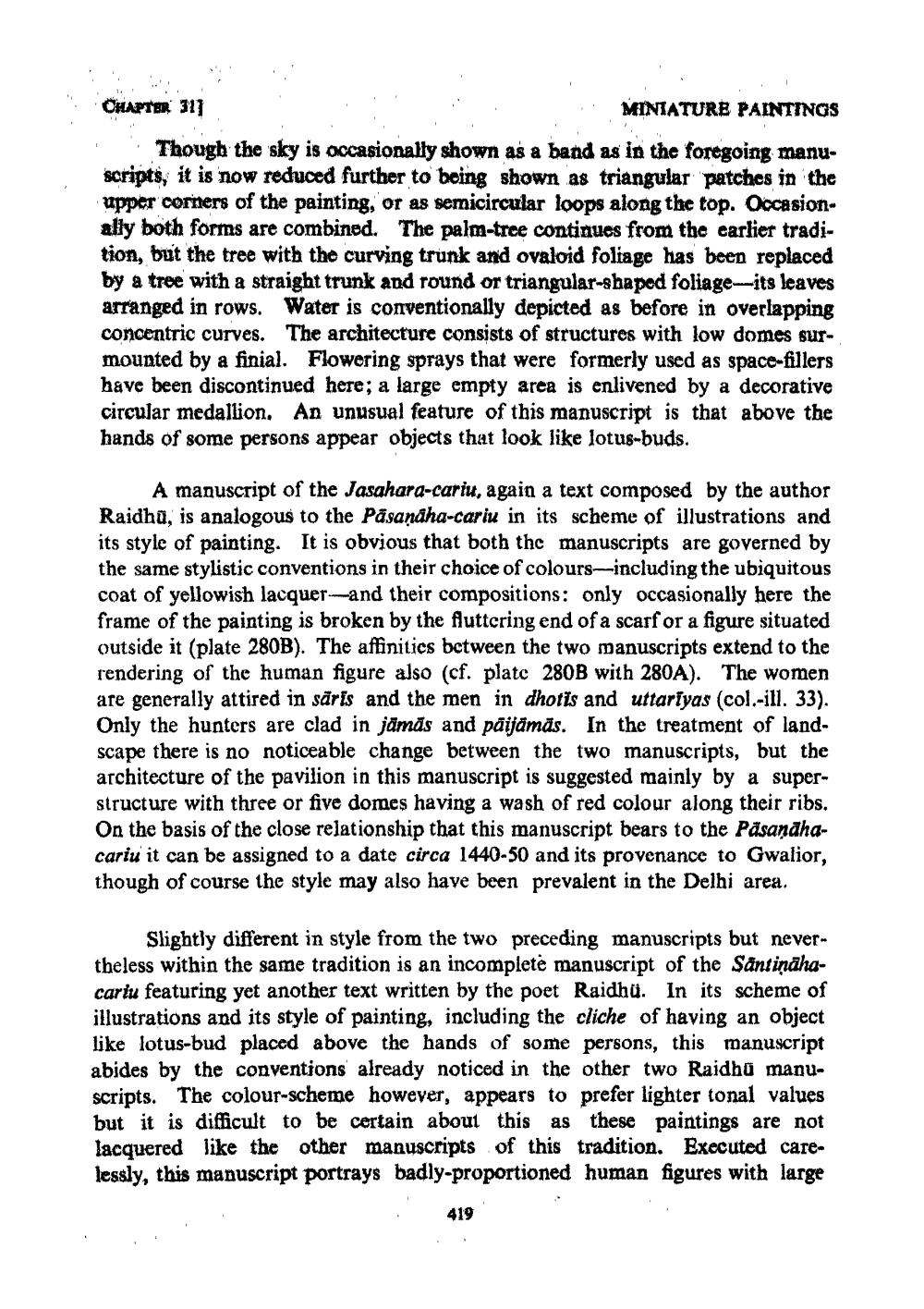________________
CHAPTER 31]
MINIATURE PAINTINGS
Though the sky is occasionally shown as a band as in the foregoing manuscripts, it is now reduced further to being shown as triangular patches in the upper corners of the painting, or as semicircular loops along the top. Occasionally both forms are combined. The palm-tree continues from the earlier tradition, but the tree with the curving trunk and ovaloid foliage has been replaced by a tree with a straight trunk and round or triangular-shaped foliage-its leaves arranged in rows. Water is conventionally depicted as before in overlapping concentric curves. The architecture consists of structures with low domes surmounted by a finial. Flowering sprays that were formerly used as space-fillers have been discontinued here; a large empty area is enlivened by a decorative circular medallion. An unusual feature of this manuscript is that above the hands of some persons appear objects that look like lotus-buds.
A manuscript of the Jasahara-cariu, again a text composed by the author Raidha, is analogous to the Pasandha-cariu in its scheme of illustrations and its style of painting. It is obvious that both the manuscripts are governed by the same stylistic conventions in their choice of colours-including the ubiquitous coat of yellowish lacquer-and their compositions: only occasionally here the frame of the painting is broken by the fluttering end of a scarf or a figure situated outside it (plate 280B). The affinities between the two manuscripts extend to the rendering of the human figure also (cf. plate 280B with 280A). The women are generally attired in säris and the men in dhotis and uttariyas (col.-ill. 33). Only the hunters are clad in jämās and pāijāmās. In the treatment of landscape there is no noticeable change between the two manuscripts, but the architecture of the pavilion in this manuscript is suggested mainly by a superstructure with three or five domes having a wash of red colour along their ribs. On the basis of the close relationship that this manuscript bears to the Pasandhacariu it can be assigned to a date circa 1440-50 and its provenance to Gwalior, though of course the style may also have been prevalent in the Delhi area.
Slightly different in style from the two preceding manuscripts but nevertheless within the same tradition is an incomplete manuscript of the Santinähacartu featuring yet another text written by the poet Raidhü. In its scheme of illustrations and its style of painting, including the cliche of having an object like lotus-bud placed above the hands of some persons, this manuscript abides by the conventions already noticed in the other two Raidho manuscripts. The colour-scheme however, appears to prefer lighter tonal values but it is difficult to be certain about this as these paintings are not lacquered like the other manuscripts of this tradition. Executed carelessly, this manuscript portrays badly-proportioned human figures with large
419




